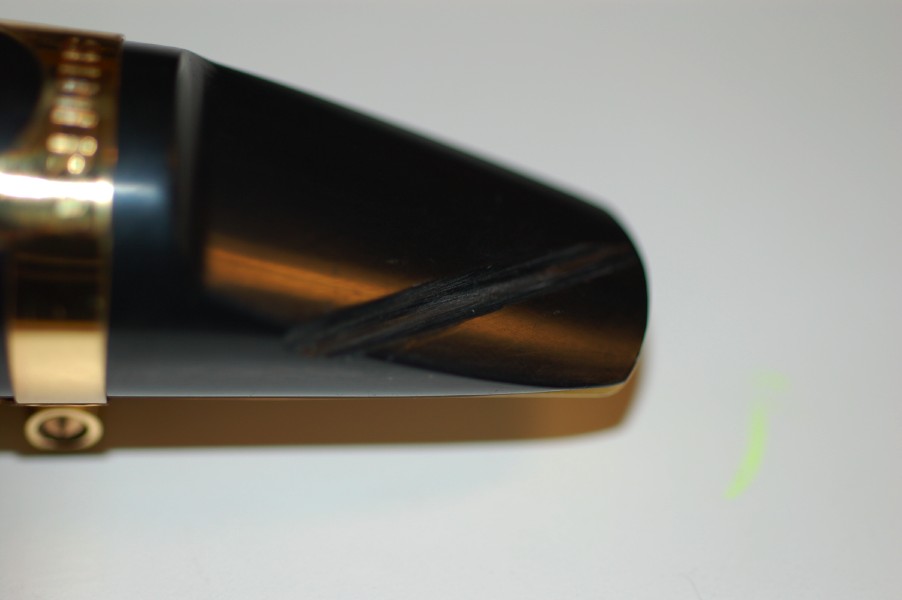
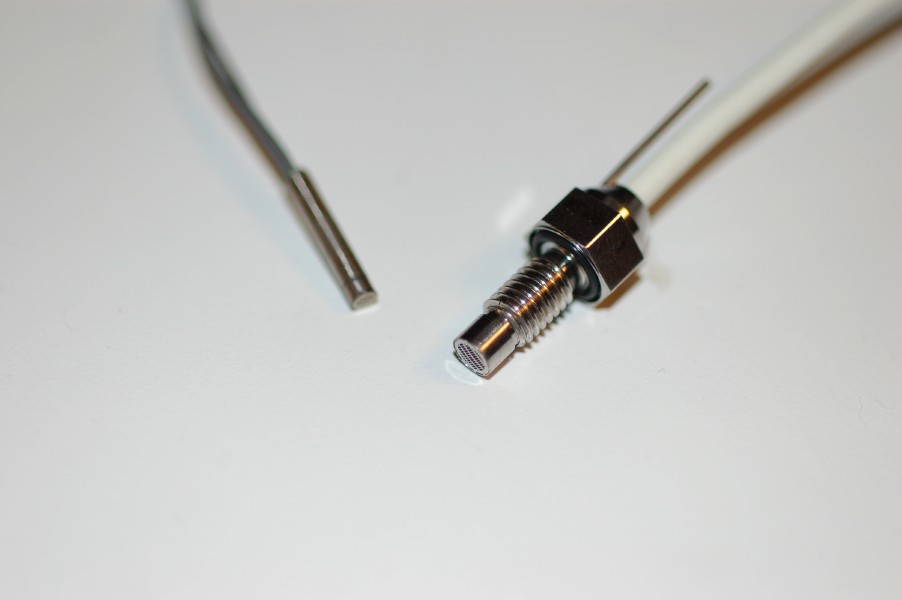
Figures 1 and 2: The mouthpiece groove and the Endevco transducers (click to enlarge).
Figures 3 - 5: The complete mouthpiece system (click to enlarge).
Vocal-Tract Influence during Saxophone Performance | Gary P. Scavone, Antoine Lefebvre, and Andrey R. da Silva |
| Music Technology, Schulich School of Music |
| McGill University |
A complete description of this work and the results are reported in:
ABSTRACT: This paper presents experimental results that quantify the range of influence of vocal tract manipulations used in saxophone performance. The experiments utilized a measurement system that provides a relative comparison of the upstream windway and downstream air column impedances under normal playing conditions, allowing researchers and players to investigate the effect of vocal-tract manipulations in real time. Playing experiments explored vocal-tract influence over the full range of the saxophone, as well as when performing special effects such as pitch bending, multiphonics, and ``bugling''. The results show that, under certain conditions, players can create an upstream windway resonance that is strong enough to override the downstream system in controlling reed vibrations. This can occur when the downstream air column provides only weak support of a given note or effect, especially for notes with fundamental frequencies an octave below the air column cutoff frequency and higher. Vocal-tract influence is clearly demonstrated when pitch bending notes high in the traditional range of the alto saxophone and when playing in the saxophone's extended register. Subtle timbre variations via tongue position changes are possible for most notes in the saxophone's traditional range and can affect spectral content from at least 800 -- 2000 Hz.
ABSTRACT: Since the early 1980s, there have been a number of investigations into the role and influence of a player's vocal tract on the sound production of wind instruments. While the underlying acoustic principles are relatively well understood, a general lack of agreement remains within both the music acoustics and performance communities with regard to the importance of this mechanism during playing conditions. Disparities arise in part because subtle manipulations of the oral cavity can affect the response of the instrument without necessarily producing effects audible to an observer. A real-time measurement system is demonstrated that provides a visual comparison of the relative strengths of the "upstream" windway and "downstream" air column impedances under playing conditions. The system assumes continuity of volume flow on either side of the "reed," which leads to a direct proportionality between the upstream and downstream pressures and impedances. Playing experiments clearly demonstrate many instances in which vocal-tract manipulations can cause impedance peak magnitudes in the mouth cavity to exceed those in the downstream air column. In addition to providing visual "proof" of such manipulations, the system is expected to offer a pedagogical tool to help performers better learn how to make use of this control mechanism.


Figures 1 and 2: The mouthpiece groove and the Endevco transducers (click to enlarge).
Figures 3 - 5: The complete mouthpiece system (click to enlarge).
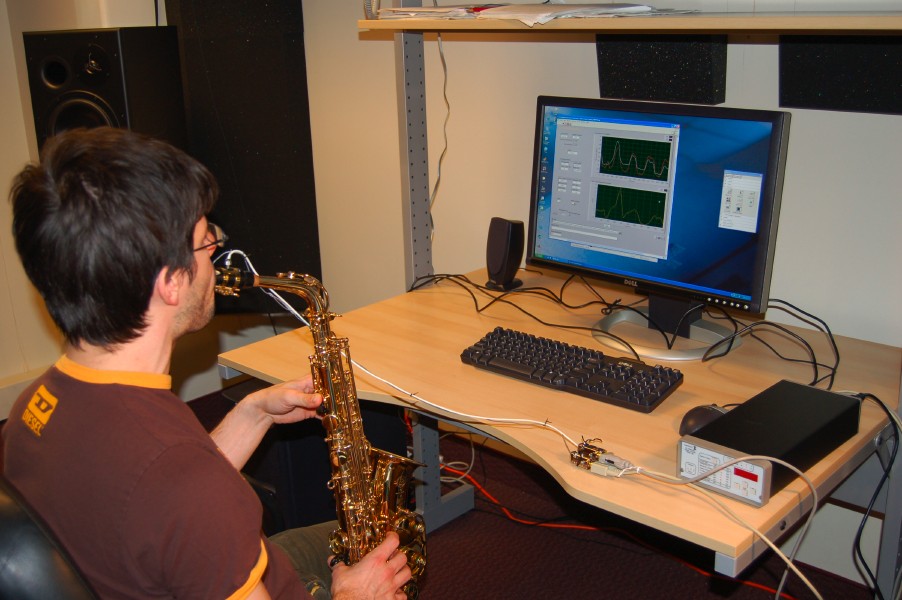
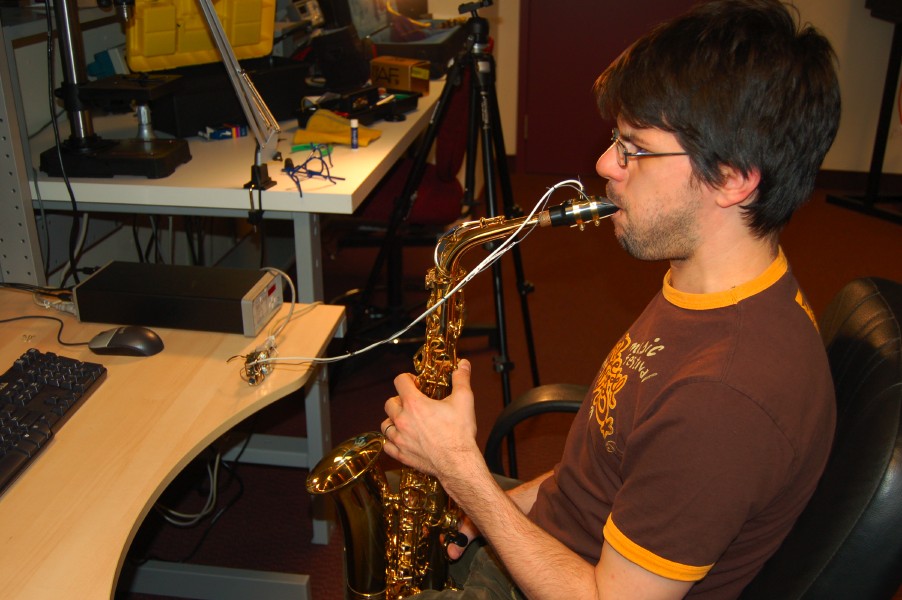
Figures 6 and 7: The mouthpiece and saxophone system with player (click to enlarge).
Figures 8 and 9: The mouthpiece and saxophone system in the IAC double-walled sound isolation booth (click to enlarge).
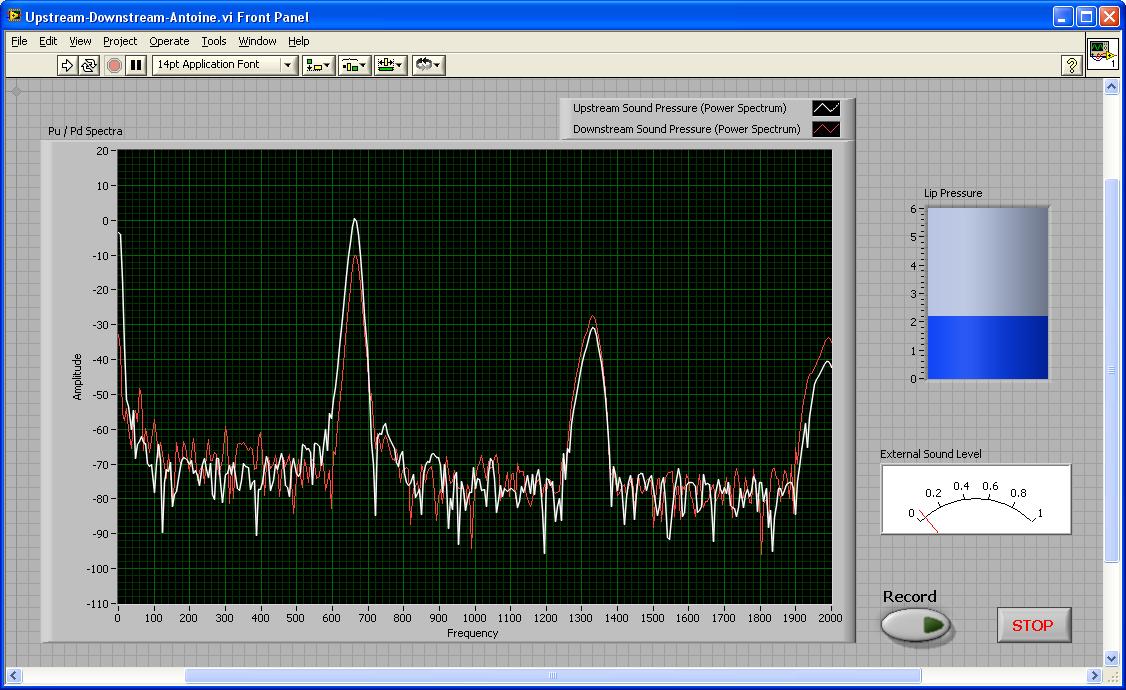
Figure 10: The LabVIEW interface (click to enlarge).
 |
© Gary P. Scavone. All Rights Reserved. Computational Acoustic Modeling Lab (CAML) Music Technology, McGill University. |